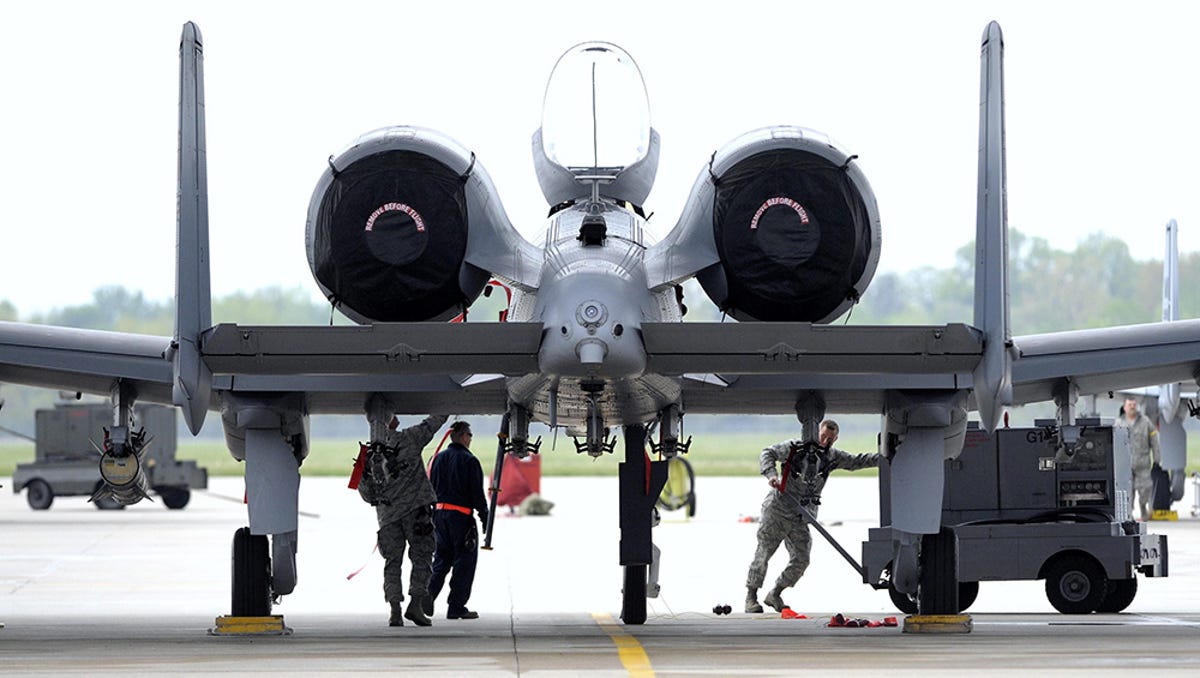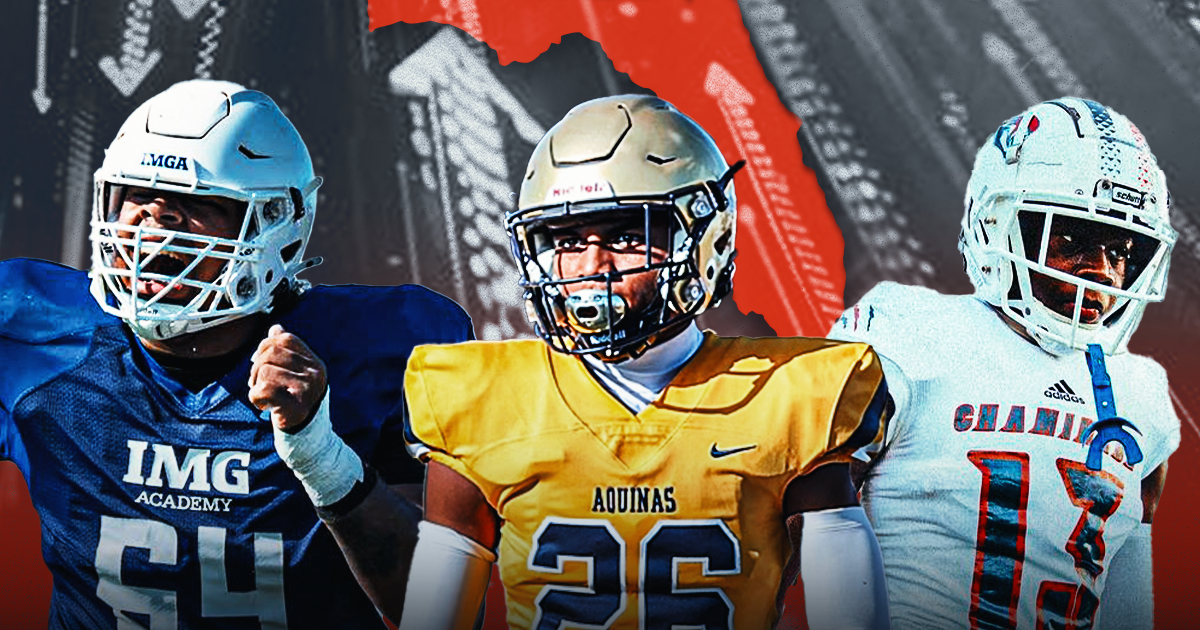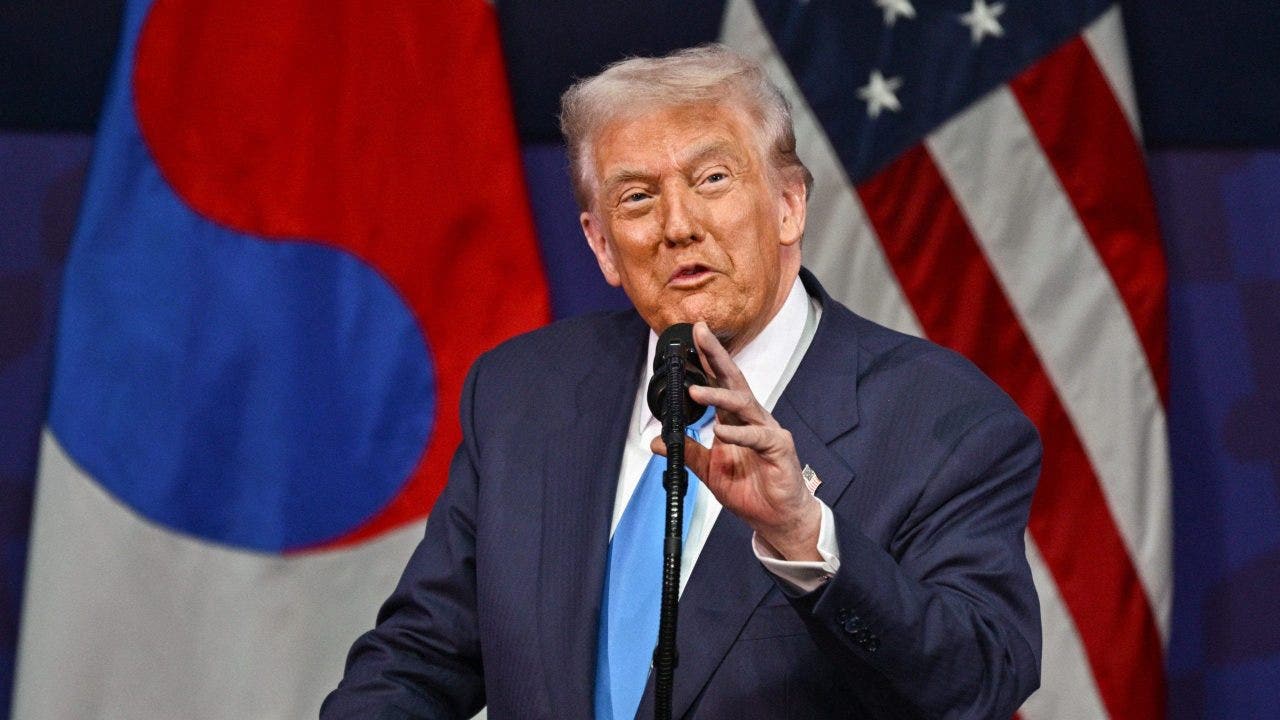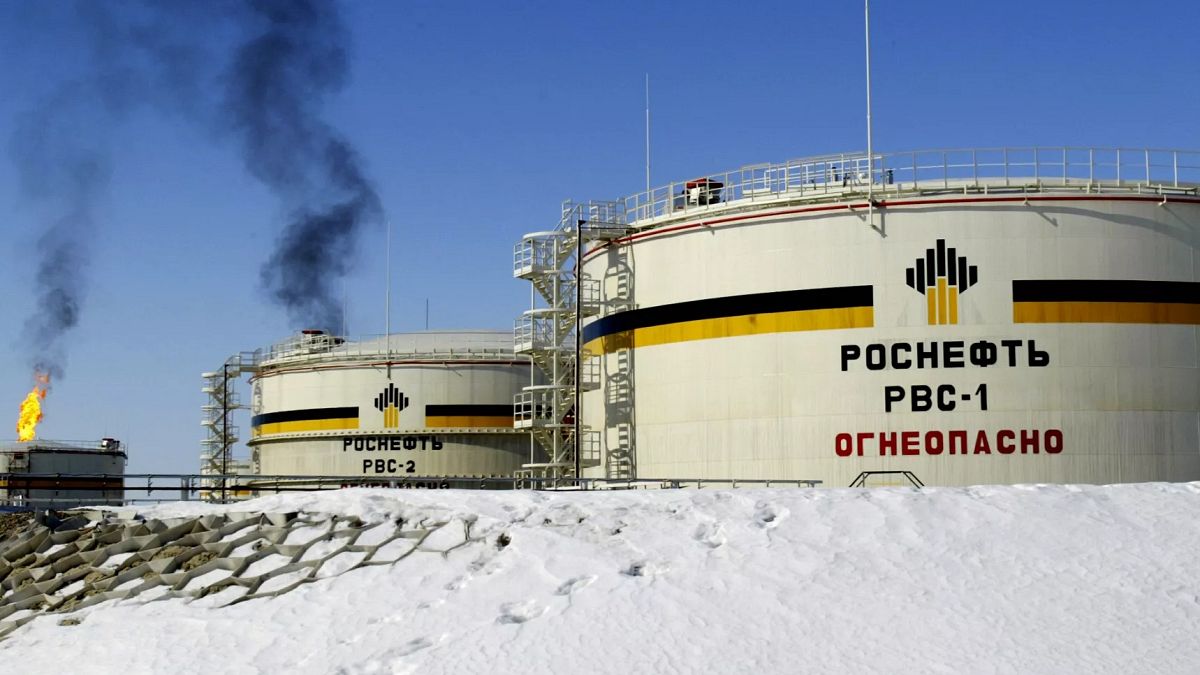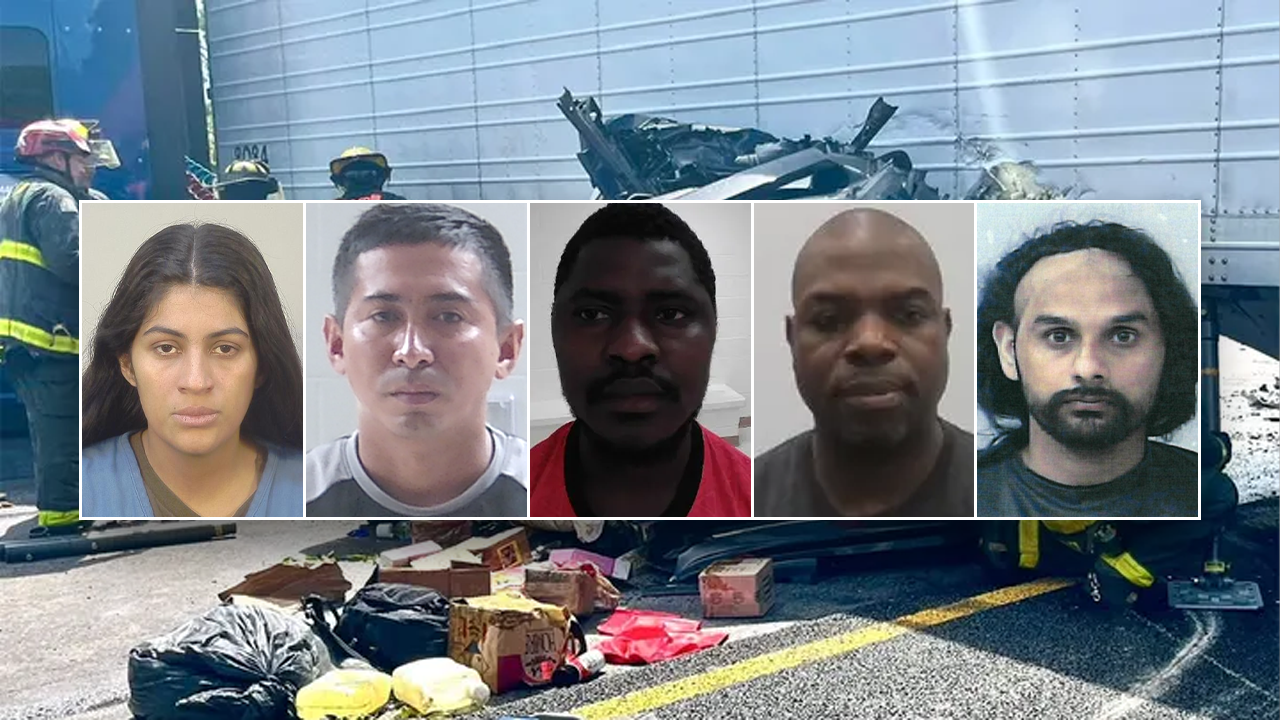New York
Video: How Mamdani Has Evolved in the Mayoral Race

new video loaded: How Mamdani Has Evolved in the Mayoral Race
By Nicholas Fandos, Claire Hogan, Nikolay Nikolov and Leila Medina
October 23, 2025

New York
Can Faster Buses Really Be Free?

On a rough day, a bus ride in New York starts like this:
Then there are the traffic jams …
the mistimed stop lights …
the bunched-up buses …
and the cars blocking the bus lane.
Zohran Mamdani has made this grim experience central to his pledge to improve city life. Can his bus plan actually do that?
Some of the slowest buses in America plod through New York, stopping and starting, bunching and idling, at about eight miles per hour on average. Speeds have improved little over the past decade. The least reliable buses seldom show up on time.
Zohran Mamdani has built a strikingly successful mayoral campaign by tapping frustration with this system and marrying it to his broader campaign pledge to make New York more affordable.
“Fast and free buses,” he has promised, the two goals always locked together.
Get rid of fares, in theory, and that should speed things up, ending the backlog of riders lined up at every stop. More bus lanes and better infrastructure could bolster those gains. And making buses free would be a boon, Mr. Mamdani argues, for New Yorkers who have said in surveys that they’ve often struggled to come up with fare money.
“Today in the wealthiest city in the wealthiest country in the history of the world, one in five New Yorkers cannot afford the bus fare,” Mr. Mamdani said, defending his plan in the campaign’s final debate last week. Give people back that money, and more of their time, he suggests, and the economic benefits for the city would outweigh even the cost of a fare-free program he estimates could run $700 million a year.
Critics, and even some transit advocates, warn that his two goals are in tension: Spend such vast sums subsidizing the bus, and there won’t be much left over to improve it, especially at a time when the federal government is undercutting support for transit and the economy is shaky. Under any reasonable estimate, the annual cost to the city of making buses free would be more than transit officials expect to raise this year from congestion pricing, the Manhattan tolling program in the middle of its own political fight.
Whether fast buses and free ones can really go together depends on many questions, some beyond a mayor’s control, including whether Gov. Kathy Hochul would cooperate on higher taxes to raise revenue. Even if Mr. Mamdani were able to eliminate fares, what effect would it really have? And would it be enough to change the slog of riding a bus in the city?
Free and maybe faster
To understand the ambition of Mr. Mamdani’s plan, it’s helpful to first take in the vastness of New York’s bus network. It’s at a whole other scale from the subway system (and from any city currently running free buses):
Mr. Mamdani, who is the front-runner in the Nov. 4 general election, first championed the idea of free buses by pushing for a one-year pilot that made a single route in each borough free for one year starting in September 2023. Expanding the idea citywide would cover 340 routes that carry about 1.5 million paid trips per weekday.
Those rides represent a lot of money that the Metropolitan Transportation Authority, which runs the bus and subway systems, would no longer be collecting at the fare box. The fare today is $2.90, set to rise to $3 in January (although the actual fare collected per paying rider is more like $1.90, after accounting for free transfers and discounted fare cards). If the city were to pay for this instead, the total cost would depend on ridership numbers.
The M.T.A. says the cost of a free-fare program is probably higher than Mr. Mamdani’s estimate. As the authority cracks down on fare evasion, and ridership and fares increase, it projects that by 2028 the annual bus fare revenue, including paratransit, could exceed $1 billion — much higher than the campaign’s numbers.
About a quarter of bus riders also transfer to the subway. And if they haven’t paid for the first leg of the trip, the M.T.A. fears that more passengers may be inclined to skip the train fare, too.
John J. McCarthy, chief of policy and external relations at the M.T.A., said in a statement that the authority was pleased with the attention that transit has gotten in the mayoral race, but also expressed caution about making the buses free without more study.
“Why is congestion pricing successful? Because we took the time to study its benefits and impacts,” he said about the yearslong review for the toll program. “This proposal would demand the same kind of rigorous analysis.”
Still, the Mamdani campaign says the overall cost is relatively small — less than 1 percent of the city’s annual budget. But for the M.T.A., fare revenue covers about 19 percent of its $4.8 billion bus operating budget.
Mr. Mamdani suggests that the economic benefits of free fares could be twice as large as the costs. That’s hard to evaluate (the figure includes assigning a dollar value to the time you’d save by spending less of it stuck on the bus). His other claim is that eliminating the fare would itself speed up the buses.
That is theoretically true. All those seconds it can take each passenger to root around in a pocket, count out change or fuss with the card reader — at every stop — add up to real delays. And just one rider doing this can be the difference between making and missing a green light.
But New York’s own pilot program illustrates one hitch. Across all five free routes, ridership increased during the pilot by about 30 to 40 percent, mostly driven by existing riders taking more trips. The buses, however, actually slowed, because all those new riders still had to board the bus and request stops, offsetting the time savings from getting rid of fares.
That’s another complication: If ridership rises substantially, you have to add service to keep up with it, or you may not see any speed benefits. And that costs money, too.
Mr. Mamdani cites an estimate that free buses could shave 12 percent off trip times. The number comes from Charles Komanoff, a longtime transit advocate and mathematician whose traffic modeling helped inform congestion pricing. He first tried to assess the impact of free buses in 2007, as part of a study of whether congestion pricing could generate enough revenue to make transit free.
“That idea of free transit — it was visionary, it was lovely, it was beguiling,” Mr. Komanoff recalled recently. Politically at the time, though, “it was completely impractical.”
He put down the idea for nearly two decades. Then last December, he heard Mr. Mamdani, polling at the time in single digits, talk about free buses at a mayoral transit forum.
In April, Mr. Komanoff published a new report that is the closest thing to a white paper for the Mamdani campaign on the topic. His 12 percent time savings relies on some of his 2007-era data (bus riders then dipped a card instead of tapping it). This fall, he reran his analysis again, after riding the B41 bus in Brooklyn with The New York Times to collect new data. He estimates that ending fares could cut 7 percent off a trip on the route, assuming the ridership stays constant. That would still be, he said, “a triumph” — an improvement akin to what drivers have seen inside Manhattan’s congestion zone.
Faster but not free
The B41 bus, connecting the Flatbush commercial corridor to Downtown Brooklyn, is one of the busiest routes in the city. The comptroller’s office gives it a D grade for its poor on-time performance and high rate of “bunching” — when buses arrive too close together and disrupt scheduling. On the route’s slowest stretch, speeds dip below four m.p.h.
Flatbush Avenue is, in short, a prime target for redesign and better bus service — something the New York City Department of Transportation has already begun to work on. And it’s a prominent example of how buses could be made faster without killing the fare box.
We rode the corridor, timed how long it takes riders to board the bus, counted all the intersections, and worked with the transportation planner Annie Weinstock to analyze the route. A trip in the evening rush hour covering the Flatbush portion of the B41 takes 58 minutes on average. But if the bus were traveling the corridor totally unimpeded, it would need only 16 minutes to go from end to end. Everything else is a form of delay: The bus spends more time sitting at red lights, and almost as much time sitting in traffic:
Making the B41 substantially faster would require a series of changes:
Mr. Mamdani has voiced support for infrastructure initiatives like this, although the campaign’s estimated cost for the free-fare program doesn’t include the sizable expenses needed to do such projects in tandem. Transit advocates are also pushing the city to go further, leveraging an array of “bus rapid transit” improvements that would also enable riders to enter from all bus doors and to pay for the bus at sidewalk kiosks, while revamping more intersection signals to prioritize buses.
All-door boarding and off-board payment would logistically have the same effect as free fares, cutting the time it takes passengers to board. We asked Ms. Weinstock, who has studied how to implement faster buses in New York, to estimate how much all of these changes together would speed up the B41.
In an ideal world, all these investments could cut about 40 percent off the time of a B41 trip — far more than doing free fares alone. It certainly helps to speed up the process of boarding riders. But that’s not the thing that helps the most. And there are other ways to get those same savings while still collecting fares.
Of course, free fares are about financial savings for riders as much as time savings. But there are some other, less sweeping ways to do that, too.
About 375,000 low-income riders already pay half-cost fares under the Fair Fares program funded by the city. It subsidizes fares on the bus and subway for households making less than 145 percent of the federal poverty level.
But advocates want to push the threshold up to 200 percent — or even 300 percent, where a family of four earning as much as $96,500 a year would qualify.
“We think it would be much less costly than a totally free system,” said David R. Jones, president of the Community Service Society, which has pushed for Fair Fares. He’s also a member of the M.T.A. board.
Mr. Mamdani supports expanding Fair Fares for the subway, alongside free buses. Doing both would further drive up the total cost of his transit agenda.
Former Gov. Andrew M. Cuomo, who is polling behind Mr. Mamdani in the mayoral race, has said he would make the subway and buses free for New Yorkers making up to 150 percent of the federal poverty line, or about $48,000 for a family of four.
Free for some, faster for more
The allure of free buses is partly that many of these other interventions are harder. Roads must be ripped up and redesigned. Neighbors will complain. Infrastructure projects take years (the redesign of a roughly one-mile stretch of Flatbush Avenue is scheduled to be done next year). Even scaling up Fair Fares would require the city to do more to reach people who qualify — today only about a third of residents who do are in the program.
But you can declare the bus to be free tomorrow, and it will be free tomorrow. It’s a shortcut to improving an aspect of city life where nearly all other answers are slow and hard.
“It’s a guarantee that your life will be better in a way that you can feel every single day,” said Michelle Wu, the mayor of Boston and someone Mr. Mamdani has often cited.
In Boston, the city pays to offset the fares on three high-ridership bus routes that serve lower-income neighborhoods (ridership is up, travel times about the same). That’s the kind of partial measure Mr. Mamdani could pursue: a larger pilot, a targeted set of routes, perhaps while expanding Fair Fares to aid more riders citywide. Maybe that buys patience for the harder improvements.
His campaign insists that the universality of free fares is the point. It’s what gives working-class riders access to the whole city. It’s what could unlock faster speeds for everyone.
But there’s evidence that New Yorkers might like the spirit of the pitch more than the potential reality of it. A recent New York Times/Siena polling experiment of two groups of likely voters showed 56 percent supported making the buses free, even as 57 percent said the city “should not do this.”
To voters, the value of Mr. Mamdani’s promise may largely be in the signal it sends: that he sees New Yorkers struggling on the bus and wants to make things better with big ideas. And that whether or not he really turns off all the card readers, surely he’ll do something to help your wallet, and to fix the buses.
Brad Lander, the city comptroller and an ally of Mr. Mamdani who also ran for mayor in the primary, suggested “fast and free” has a logic to it that’s not necessarily literal. Yes, you need resources to make the buses faster, he allowed, but you also need political will. And Mr. Mamdani is building it in a way that might not have worked had he promised “fast buses” alone.
“If you had had someone say, ‘Well, what if we make the bus a dollar cheaper than the subway, but also produce 20 interborough bus rapid transit lanes, and do all-door boarding to help everyone!’ — those might have been really good ideas,” Mr. Lander said, poking fun at his own policy-dense campaign.
“But they didn’t sufficiently capture the imagination of New Yorkers.”
New York
Why Can’t People Pronounce ‘Zohran Mamdani’?

It was more than an hour into last week’s critical three-way debate for mayor of New York City, and somehow, former Gov. Andrew M. Cuomo had yet to say the name of the race’s front-runner.
He called him “the assemblyman” and a miniature version of former Mayor Bill de Blasio. But he shied away from saying a name that he had repeatedly butchered on the campaign trail.
“Mr. Mandani”
Andrew Cuomo in a campaign video.
And on the debate stage.
Andrew Cuomo during a Democratic primary debate in June.
“Mr. Mandami”
His pronunciation was so notably off that, during a Democratic primary debate in June, the assemblyman himself, Zohran Mamdani, called him out on it.
Zohran Mamdani during the same debate.
“M–A–M–D–A–N–I”
Mr. Cuomo is not alone.
For various reasons, legitimate and perhaps otherwise, Mr. Mamdani’s first and last name have become the subject of rather adventurous, even creative, displays of linguistic fumbling.
Curtis Sliwa, the Republican candidate, struggled with his name at the first debate of the general election last week, calling him “Zor-han.”
Curtis Sliwa in the first general election debate.
“Zorhan Mandami”
Letitia James, the New York state attorney general and a key political ally, botched his name at a major campaign rally in Washington Heights this month, enthusiastically shouting “Mandami” as he came onstage.
Letitia James at a Mamdani campaign rally.
“Zohran Mandami”
For Mr. Mamdani, having his name botched is not new. He said in an interview that mispronunciations were common growing up as an immigrant in Manhattan.
“It happened quite a lot,” he said. “But frankly, I don’t begrudge anyone who tries and gets it wrong. The effort means everything to me.”
Asked about any mnemonic tricks he recommends to help people pronounce it, Mr. Mamdani laughed.
“It’s pretty phonetic honestly,” he said.
“Zohran Mamdani”
Zohran Mamdani at a debate during the primary.
Mr. Mamdani, who is running to become the city’s first Muslim mayor, said that some people like Mr. Cuomo were intentionally mispronouncing his name or refusing to make an effort to say it correctly.
“Those who go out of their way to mispronounce it — that’s not a mistake, that’s a message,” he said.
His supporters have embraced the issue as a rallying cry against Mr. Cuomo, turning the audio clip of Mr. Mamdani correcting him into a viral song online. Mr. Mamdani also said that his mother has started to sign emails with “Momdani” — a nod to her pride in being his mother that might also help with the pronunciation.
Mr. de Blasio, the former mayor, is another Mamdani ally who admitted that he had stumbled over his name.
“Zorhan Mamdani”
“I think I’m in the ballpark now, but it did take me a while,” Mr. de Blasio said, adding: “I think it’s just to the American English ear, the construct is a little counterintuitive. It takes some practice to get the cadence of it right.”
Mr. Sliwa said in an interview that he was trying to do better: “It’ll take time. It’s not intentional.”
Mr. Sliwa, whose last name is pronounced SLEE-WUH, said he understood Mr. Mamdani’s pain.
“Out of 46 years that I’ve been the guy who founded the Guardian Angels, I’d say about 33 years of that time, my name was constantly mispronounced,” he said. “I don’t take offense to it.”
President Trump’s failed efforts to say Mr. Mamdani’s name might be viewed less benevolently, since the president has repeatedly attacked the candidate and threatened to arrest him.
President Donald J. Trump speaking to reporters on Air Force One this week.
“Mandami”
His press secretary, Karoline Leavitt, used an even more outlandish pronunciation, merging parts of his first and last name.
Karoline Leavitt at a press briefing in July.
“Zamdami”
While some pronunciation mistakes might be deliberate, several linguistics experts told The New York Times that both Mr. Mamdani’s first and last name feature letter arrangements and vowel sounds that are not common in English, and it was not a surprise that some people struggled with them.
“Languages differ from one another as to what sequences of sounds are frequent, or even possible to pronounce, and they also differ as to what spellings or letters are associated with what pronunciations,” said Gillian Gallagher, a professor of linguistics at New York University.
There are hundreds more words in English with the sequence “nd” than with “md,” Ms. Gallagher said, adding that these clusters of consonants can lead to speech processes that result in mistakes. One, known as assimilation, involves morphing the second “M” in Mr. Mamdani’s last name into an “N,” making it sound like “Mandani.”
Another, known as substitution, leads speakers to replace the “N” in Mamdani with another “M.”
Whoopi Goldberg, the television host, on “The View.”
“Zohran Mamdami”
Those patterns of speech can be difficult to avoid.
“Mamdani has an ‘M’ next to a ‘D’, and that’s hard for English speakers,” said Professor Laurel MacKenzie, a co-director of the NYU Sociolinguistics Lab.
“Our tongues are just not used to making that specific sequence of sounds.”
The softer “Ahn” sound in both Mr. Mamdani’s first and last name can also be challenging. Frequently, “Zohran” has been pronounced with a screeching “Zohr-ANNE.” That miscue is the result of vowels being pronounced differently in Americanized English, said Suzanne van der Feest, an associate research professor at the Graduate Center at the City University of New York.
Carl Heastie, speaker of the New York State Assembly, at an event where he endorsed Mr. Mamdani.
“Zohr–ANNE”
“That is somebody who speaks mainly English and is just making it into American English vowels,” Ms. van der Feest said.
“It’s an example of how spelling is interfering with how someone’s name is pronounced.”
John Samuelsen, the international president of the Transport Workers Union, said his pronunciation of Mr. Mamdani’s first name feels like a “very common outer-borough way of pronouncing Zohran.” He also noted that he avoids saying Mr. Mamdani’s last name, because “I’m afraid I’m going to mess it up.”
John Samuelsen at a Mamdani campaign rally.
“Zohr–ANNE”
Mr. Mamdani said he once visited a mosque in Manhattan for Friday prayers during the campaign and asked the group to raise their hand if they had ever heard someone consistently mispronounce their name. Most people in the room raised their hands.
“It’s something countless immigrants have experienced,” he said. “When people mock or intentionally distort someone’s name, it’s a way of saying someone doesn’t belong here.”
Mr. Mamdani said he took pride in his name. His mother picked his first name, which means “the first star in the sky.” His father picked his middle name, Kwame, to honor Kwame Nkrumah, the first president of Ghana, who fought for independence.
“Andrew Cuomo never struggles with names like John Catsimatidis,” Mr. Mamdani said in reference to the Greek billionaire grocer. “But somehow Mamdani is too difficult. It’s an issue of prejudice.”
Others have expressed frustration over Mr. Cuomo’s errors, including the journalist Anand Giridharadas, who corrected Mr. Cuomo on MSNBC this week: “This is a very big, diverse city you want to lead. We should get the names right.”
Mr. Cuomo sometimes gets it right.
Andrew Cuomo in a video posted to his campaign’s TikTok account.
“Zohran Mamdani”
Rich Azzopardi, a spokesman for Mr. Cuomo, said that the former governor’s name was often botched, too. Indeed, Como, like the Italian lake, is a common mispronunciation for Cuomo, which is pronounced KWO-MO.
“It’s unintentional and he should get over it — people mangle ‘Cuomo’ all the time and you don’t hear us whine about it,” Mr. Azzopardi said.
Ms. MacKenzie and others were quick to note, though, that pronouncing difficult names correctly is not an insurmountable challenge. Practice and a concerted effort to ask people how they pronounce their names helps. That’s particularly the case in New York City, with such a rich array of immigrant communities from across the world.
“We all learned how to say ‘Daenerys Targaryen’ when we were all into ‘Game of Thrones,’” Ms. MacKenzie said.
“We can learn hard names. We can do it. We can figure out how the spellings map to the sounds. We can all get there. We just have to practice.”
New York
Video: The Evolution of New York City Benches

new video loaded: The Evolution of New York City Benches
By Anna Kodé, Gabriel Blanco, Laura Salaberry, Christina Shaman, Leila Medina and Rebecca Suner
October 21, 2025
-

 World1 week ago
World1 week agoIsrael continues deadly Gaza truce breaches as US seeks to strengthen deal
-

 News1 week ago
News1 week agoVideo: Federal Agents Detain Man During New York City Raid
-

 News1 week ago
News1 week agoBooks about race and gender to be returned to school libraries on some military bases
-

 Technology1 week ago
Technology1 week agoAI girlfriend apps leak millions of private chats
-

 Politics1 week ago
Politics1 week agoTrump admin on pace to shatter deportation record by end of first year: ‘Just the beginning’
-

 News1 week ago
News1 week agoTrump news at a glance: president can send national guard to Portland, for now
-

 Business1 week ago
Business1 week agoUnionized baristas want Olympics to drop Starbucks as its ‘official coffee partner’
-
Science1 week ago
Peanut allergies in children drop following advice to feed the allergen to babies, study finds
